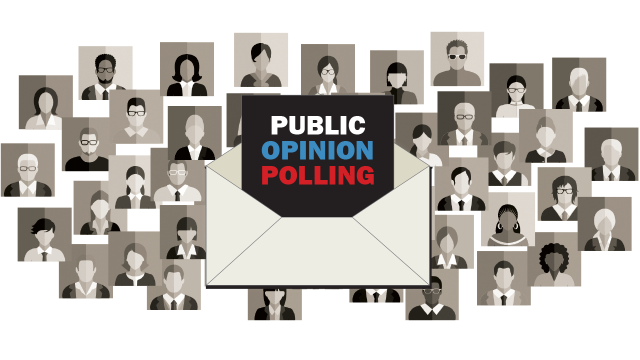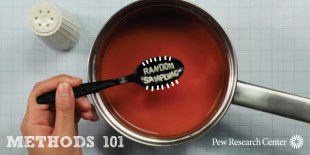Pew Research Center has deep roots in U.S. public opinion research. Launched initially as a project focused primarily on U.S. policy and politics in the early 1990s, the Center has grown over time to study a wide range of topics vital to explaining America to itself and to the world. Our hallmarks: a rigorous approach to methodological quality, complete transparency as to our methods, and a commitment to exploring and evaluating ongoing developments in data collection. Learn more about how we conduct our domestic surveys here.
The American Trends Panel

Try our email course on polling
Want to know more about polling? Take your knowledge to the next level with a short email mini-course from Pew Research Center. Sign up now.
From the 1980s until relatively recently, most national polling organizations conducted surveys by telephone, relying on live interviewers to call randomly selected Americans across the country. Then came the internet. While it took survey researchers some time to adapt to the idea of online surveys, a quick look at the public polls on an issue like presidential approval reveals a landscape now dominated by online polls rather than phone polls.
Most of our U.S. surveys are conducted on the American Trends Panel (ATP), Pew Research Center’s national survey panel of over 10,000 randomly selected U.S. adults. ATP participants are recruited offline using random sampling from the U.S. Postal Service’s residential address file. Survey length is capped at 15 minutes, and respondents are reimbursed for their time. Respondents complete the surveys online using smartphones, tablets or desktop devices. We provide tablets and data plans to adults without home internet. Learn more about how people in the U.S. take Pew Research Center surveys.

Methods 101
Our video series helps explain the fundamental concepts of survey research including random sampling, question wording, mode effects, non probability surveys and how polling is done around. the world.
The Center also conducts custom surveys of special populations (e.g., Muslim Americans, Jewish Americans, Black Americans, Hispanic Americans, teenagers) that are not readily studied using national, general population sampling. The Center’s survey research is sometimes paired with demographic or organic data to provide new insights. In addition to our U.S. survey research, you can also read more details on our international survey research, our demographic research and our data science methods.
Our survey researchers are committed to contributing to the larger community of survey research professionals, and are active in AAPOR and is a charter member of the American Association of Public Opinion Research (AAPOR) Transparency Initiative.
Frequently asked questions about surveys
- Why am I never asked to take a poll?
- Can I volunteer to be polled?
- Why should I participate in surveys?
- What good are polls?
- Do pollsters have a code of ethics? If so, what is in the code?
- How are your surveys different from market research?
- Do you survey Asian Americans?
- How are people selected for your polls?
- Do people lie to pollsters?
- Do people really have opinions on all of those questions?
- How can I tell a high-quality poll from a lower-quality one?
Reports on the state of polling
- Key Things to Know about Election Polling in the United States
- A Field Guide to Polling: 2020 Edition
- Confronting 2016 and 2020 Polling Limitations
- What 2020’s Election Poll Errors Tell Us About the Accuracy of Issue Polling
- Q&A: After misses in 2016 and 2020, does polling need to be fixed again? What our survey experts say
- Understanding how 2020 election polls performed and what it might mean for other kinds of survey work
- Can We Still Trust Polls?
- Political Polls and the 2016 Election
- Flashpoints in Polling: 2016


